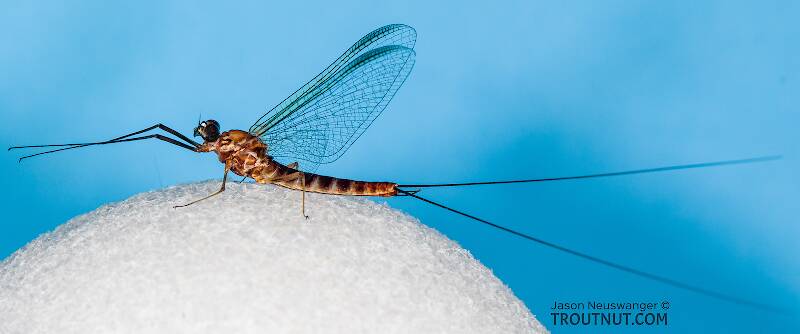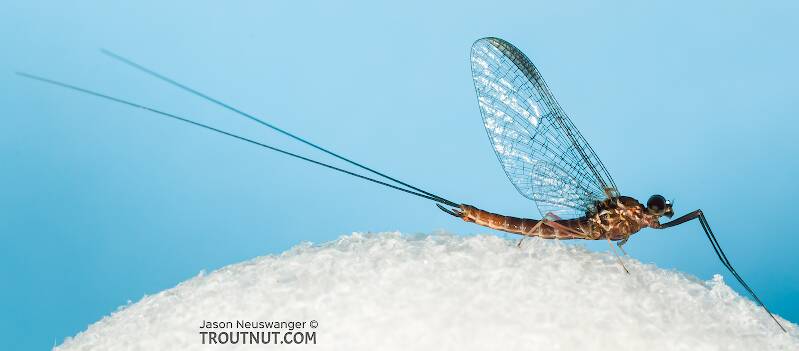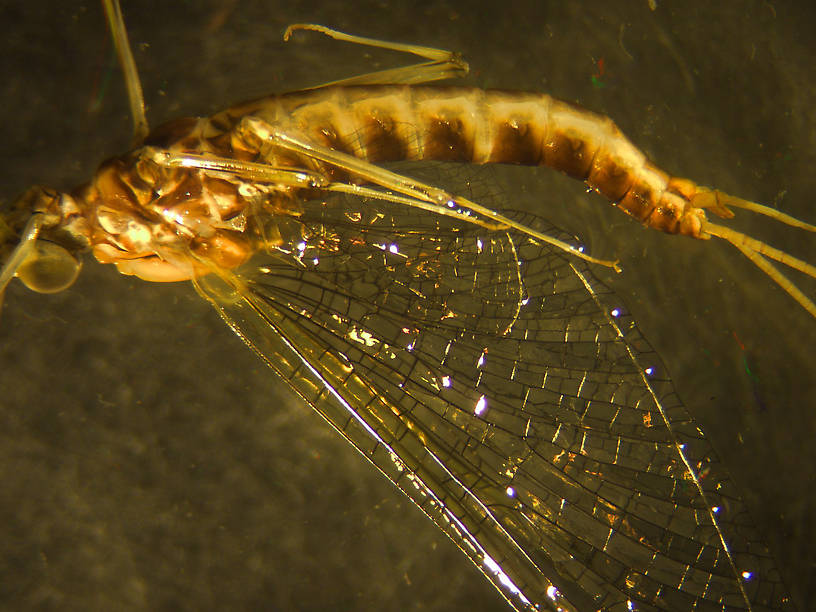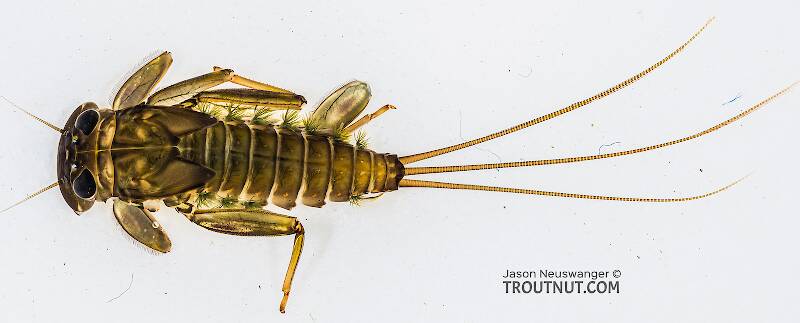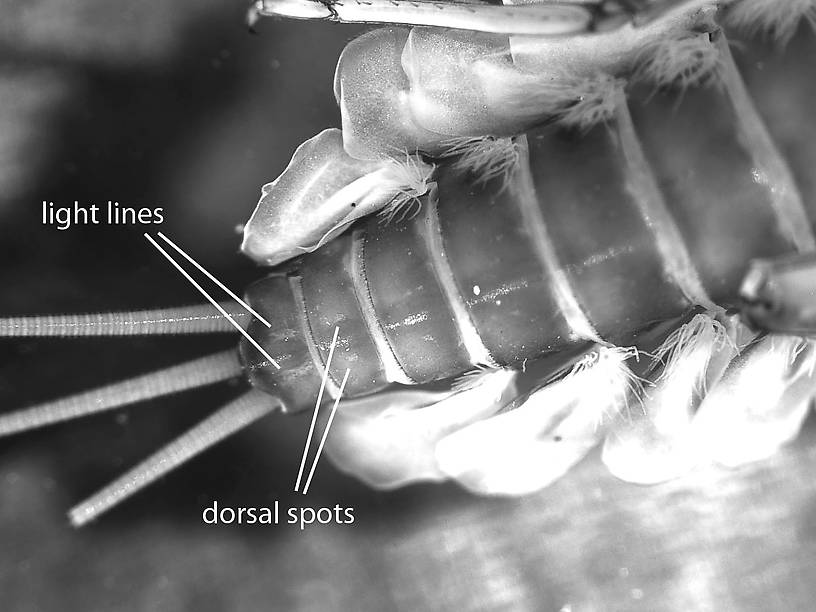
Salmonflies
Pteronarcys californica
The giant Salmonflies of the Western mountains are legendary for their proclivity to elicit consistent dry-fly action and ferocious strikes.


Mayfly Species Rhithrogena virilis
Species Range
Spinner behavior
Time of day: Midday-evening
Physical description
Most physical descriptions on Troutnut are direct or slightly edited quotes from the original scientific sources describing or updating the species, although there may be errors in copying them to this website. Such descriptions aren't always definitive, because species often turn out to be more variable than the original describers observed. In some cases, only a single specimen was described! However, they are useful starting points.
Male Spinner
Wing length: 15 mm
A large species with the usual almost unicolorous, brown coloration. Head brown with ochreous shading around bases of antennae and the anterior portion suffused with smoky. Notum brown, with the scutellum and adjacent parts light ochre-brown; pleura shaded with ochreous, particularly anterior to base of wings, a dark streak from base of forewing to pronotum; sternum tinged with smoky in median area. Abdomen brown, irregularly paler along lateral edge and on posterior segments ventrally. Forceps and setae deep smoky. Forelegs deep smoky; mid and hind legs lighter brown with the usual smoky streak on each femur. Wings hyaline with a faint tinge of amber along costa; veins and crossveins fine, deep brown, the latter anastomosing as usual in pterostigmatic region.
Female Spinner
Wing length: 15 mm
Head suffused with smoky anterior to antennae; area between ocelli and antennae light ochreous; next the eyes and posterior to ocelli light ruddy brown with a slight median smoky tinge and the vertex in lateral angles slightly ochreous. Otherwise very similar to male, but with slightly paler thorax.
Specimens of the Mayfly Species Rhithrogena virilis
1 Female Dun
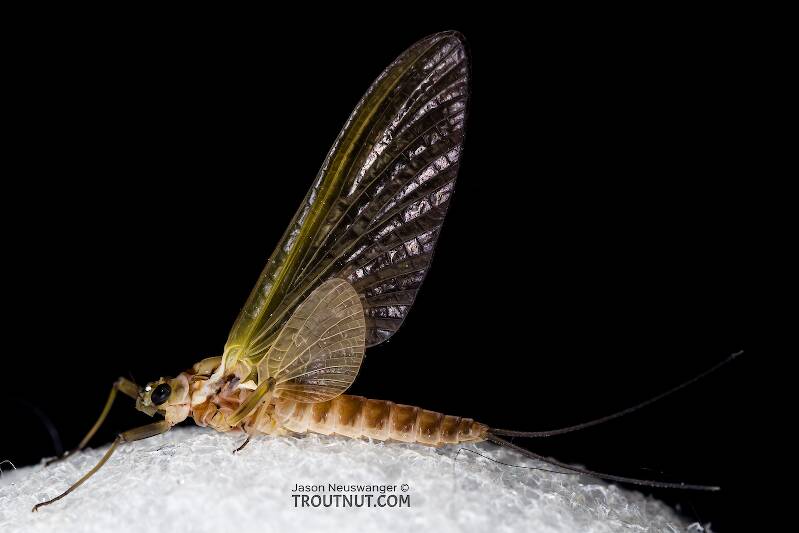
3 Male Spinners
2 Nymphs
Start a Discussion of Rhithrogena virilis
References
- McDunnough, J. 1934. New species of North American Ephemeroptera IV. Canadian Entomologist 66: 154-164.
- Needham, James G., Jay R. Traver, and Yin-Chi Hsu. 1935. The Biology of Mayflies. Comstock Publishing Company, Inc.
Mayfly Species Rhithrogena virilis
Species Range
Resources
- NatureServe
- Integrated Taxonomic Information System
- Global Biodiversity Information Facility
- Described by McDunnough (1934)


